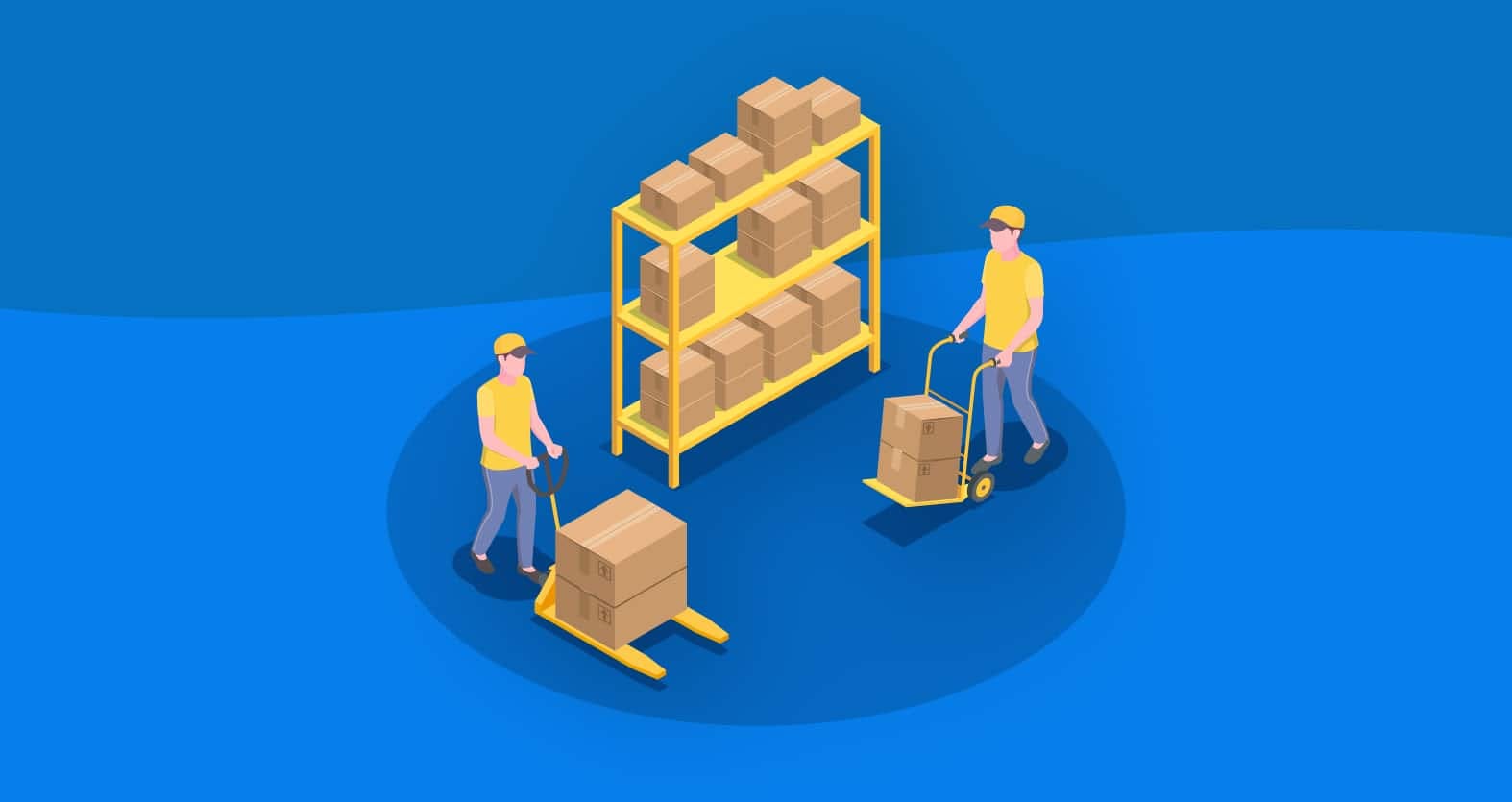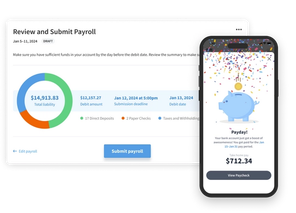
What Amazon Prime Day Can Teach HR About How (Not) To Retain Employees
By Eddy Team — June 22, 2021
Over the past 24 hours or so, your Twitter feed has likely been flooded with Amazon #PrimeDay deals. In the fury of deals (on items you mostly don’t need), it might have been easy to overlook that all that free shipping… isn’t free.
It comes at a cost—and the cost is Amazon’s overworked front-line and warehouse employees. A recent report found that Amazon’s front line has an annual turnover rate close to 100%—almost three times greater than the industry average.
We believe treating your employees right will not only inspire them to produce better work, but will also help you to retain them longer. As such, we’ve taken a closer look at the mistakes Amazon has made and gleaned five lessons to help you make your workplace a healthy environment for all employees.
1. Be fair and transparent
… about pay, working hours, benefits, and more. And that includes when your workplace policies and programs might change, e.g., during periods of increased demand.
“When I think of Amazon Prime Day, I think of mandatory overtime,” said Tyler Hamilton, a trainer at Amazon's Shakopee, Minnesota, facility, in a statement to CNN Business.
Mandatory overtime can mean 11-hour days, or more, for Amazon employees. So, when there’s extra work to be done and no one to do it, how do you get the best out of your employees without making them want to quit?
Overtime pay is a start (Amazon employees receive time-and-a-half for working mandatory overtime), but you can also offer extra paid time off or other non-monetary compensation, such as through a rewards and recognition program (one driven by both peer-to-peer and leader-to-peer recognition).
2. Aim to reduce employee churn, not encourage it
According to a New York Times investigation, Amazon churns through employees—intentionally. A former head of HR operations at Amazon claimed CEO Jeff Bezos sees long-tenured employees as a threat and encourages voluntary turnover.
It should go without saying: this is just bad business. Employee turnover costs organizations big bucks. And losing employees when you’re already up against the current labor shortage will put your existing employees (and your business) at risk— for burnout, low levels of productivity and engagement, or worse.
Instead of hoping for employee churn, aim to retain your employees by offering safe workplaces (and workplace practices), paying them a fair wage, and providing benefits that support their well-being—in and outside of the workplace.
3. Treat employees like humans, not commodities
Speaking of safe and fair workplace practices, your company should offer paid sick leave and hazard pay (where applicable)—two benefits Amazon does not currently offer its warehouse employees.
These two policies demonstrate to your employees that you care about supporting their health and well-being—even when they can’t come to work.
4. Stop measuring time—and focus on output instead
For those not already familiar, Amazon uses “time off task”—a productivity tracking metric which measures the time employees are not engaging with the software tools at their work stations. This type of productivity surveillance controls and tracks employees’ movements down to the second. It’s also used to discipline employees who do not meet company standards for productivity.
“Time off task” is the new “butts in seats”—and both of these antiquated metrics need to go. COVID-19 ushered in the age of remote and hybrid work. During the pandemic, employees have undoubtedly demonstrated to their managers (and themselves) that value and productivity are about output—not the number of hours you’re in a seat or at a workstation.
5. Go viral for doing good
Athena, a coalition of organizations focused on confronting Amazon's growing power, has organized a series of events on Prime Day, including hosting town halls on Twitter using the hashtag #AmazonHurts to draw attention to Amazon's treatment of workers. Athena aims to amplify how Prime Day, in particular, perpetuates the underlying issues of valuing profit and speed over workers’ well-being
The lesson here? If you go viral, you want to do so for treating your employees well.
Since 2015, the outdoor recreation retailer REI has closed its doors on the other busiest shopping day of the year (Black Friday) and encouraged its employees to #OptOutside. In doing so, REI puts its people’s mental health before profits—and has helped inspire employees and customers alike to embrace the great outdoors and the healing power of nature.
Making time for positive employee experiences
As HR professionals, you help steer the ship in the direction of fairness and positive employee experiences. From fair wages to rewards and recognition, you help implement the policies that attract, retain, and support employees.
And we know your time is limited. That’s why we aim to take administrative tasks off your hands, so that you can focus on creating great employee experiences that, while they may not go viral, keep your people happy (and safe).
Find out how we can help you make the time with our all-in-one HR platform.

What Amazon Prime Day Can Teach HR About How (Not) To Retain Employees
By Eddy Team — June 22, 2021
Over the past 24 hours or so, your Twitter feed has likely been flooded with Amazon #PrimeDay deals. In the fury of deals (on items you mostly don’t need), it might have been easy to overlook that all that free shipping… isn’t free.
It comes at a cost—and the cost is Amazon’s overworked front-line and warehouse employees. A recent report found that Amazon’s front line has an annual turnover rate close to 100%—almost three times greater than the industry average.
We believe treating your employees right will not only inspire them to produce better work, but will also help you to retain them longer. As such, we’ve taken a closer look at the mistakes Amazon has made and gleaned five lessons to help you make your workplace a healthy environment for all employees.
1. Be fair and transparent
… about pay, working hours, benefits, and more. And that includes when your workplace policies and programs might change, e.g., during periods of increased demand.
“When I think of Amazon Prime Day, I think of mandatory overtime,” said Tyler Hamilton, a trainer at Amazon's Shakopee, Minnesota, facility, in a statement to CNN Business.
Mandatory overtime can mean 11-hour days, or more, for Amazon employees. So, when there’s extra work to be done and no one to do it, how do you get the best out of your employees without making them want to quit?
Overtime pay is a start (Amazon employees receive time-and-a-half for working mandatory overtime), but you can also offer extra paid time off or other non-monetary compensation, such as through a rewards and recognition program (one driven by both peer-to-peer and leader-to-peer recognition).
2. Aim to reduce employee churn, not encourage it
According to a New York Times investigation, Amazon churns through employees—intentionally. A former head of HR operations at Amazon claimed CEO Jeff Bezos sees long-tenured employees as a threat and encourages voluntary turnover.
It should go without saying: this is just bad business. Employee turnover costs organizations big bucks. And losing employees when you’re already up against the current labor shortage will put your existing employees (and your business) at risk— for burnout, low levels of productivity and engagement, or worse.
Instead of hoping for employee churn, aim to retain your employees by offering safe workplaces (and workplace practices), paying them a fair wage, and providing benefits that support their well-being—in and outside of the workplace.
3. Treat employees like humans, not commodities
Speaking of safe and fair workplace practices, your company should offer paid sick leave and hazard pay (where applicable)—two benefits Amazon does not currently offer its warehouse employees.
These two policies demonstrate to your employees that you care about supporting their health and well-being—even when they can’t come to work.
4. Stop measuring time—and focus on output instead
For those not already familiar, Amazon uses “time off task”—a productivity tracking metric which measures the time employees are not engaging with the software tools at their work stations. This type of productivity surveillance controls and tracks employees’ movements down to the second. It’s also used to discipline employees who do not meet company standards for productivity.
“Time off task” is the new “butts in seats”—and both of these antiquated metrics need to go. COVID-19 ushered in the age of remote and hybrid work. During the pandemic, employees have undoubtedly demonstrated to their managers (and themselves) that value and productivity are about output—not the number of hours you’re in a seat or at a workstation.
5. Go viral for doing good
Athena, a coalition of organizations focused on confronting Amazon's growing power, has organized a series of events on Prime Day, including hosting town halls on Twitter using the hashtag #AmazonHurts to draw attention to Amazon's treatment of workers. Athena aims to amplify how Prime Day, in particular, perpetuates the underlying issues of valuing profit and speed over workers’ well-being
The lesson here? If you go viral, you want to do so for treating your employees well.
Since 2015, the outdoor recreation retailer REI has closed its doors on the other busiest shopping day of the year (Black Friday) and encouraged its employees to #OptOutside. In doing so, REI puts its people’s mental health before profits—and has helped inspire employees and customers alike to embrace the great outdoors and the healing power of nature.
Making time for positive employee experiences
As HR professionals, you help steer the ship in the direction of fairness and positive employee experiences. From fair wages to rewards and recognition, you help implement the policies that attract, retain, and support employees.
And we know your time is limited. That’s why we aim to take administrative tasks off your hands, so that you can focus on creating great employee experiences that, while they may not go viral, keep your people happy (and safe).
Find out how we can help you make the time with our all-in-one HR platform.
Eddy's HR Newsletter
Sign up for our email newsletter for helpful HR advice and ideas.


